How To Remove Alcohol From GasolineAlcohol in gasoline (called ethanol) can typically range from 5% to 25% of the total. An engine has to be designed to handle ethanol and if it isn't then the air/fuel won't be right and the seals and gas lines will dry up and become brittle. If the carburetion is correct for alcohol-free gas and you put in gas with alcohol then it will run leaner and weaker. Older motorcycle engines seals aren't alcohol resistant. So If you don't like replacing them often you should only use alcohol-free gas. If no station close to you sells it then this page shows one way to get the alcohol out. The bottom of this page, starting with "Ethanol Warning", gives the study paper quotes about how ethanol inreases engine wear. 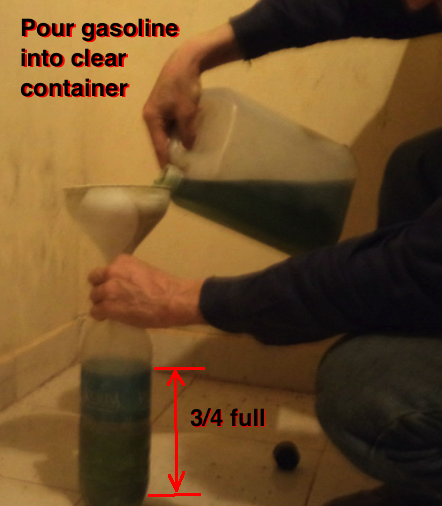 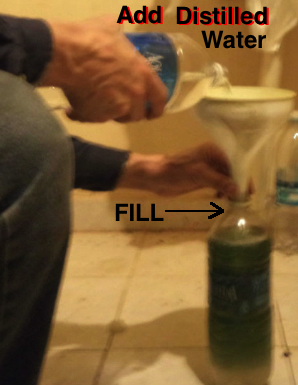 Shake the bottle so the gasoline mixes with the water. That gives opportunity for the alcohol molecules to stick to the water molecules and settle to the bottom because they are heavier than gasoline. Watch where the water meets the gasline (the frontier) and when it looks like a clear line then it is ready. Here it takes less than a minute.  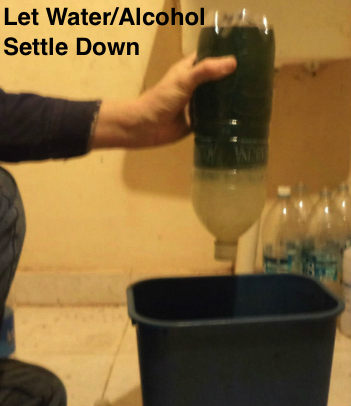 Loosen the cap halfway and squeeze the bottle so the water/alcohol goes out. Keep squeezing till what comes out changes color. 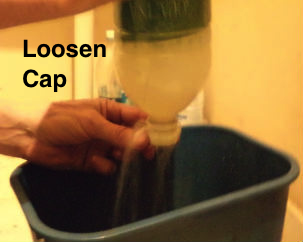 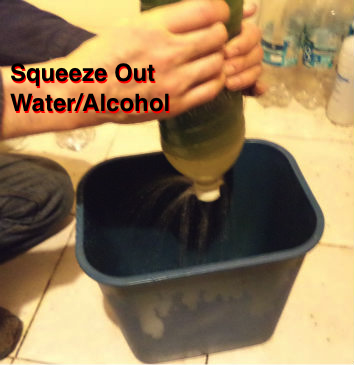 Pour out the alcohol-free gas into another clean container but pour out the last of it slowly so you can see if there is any remaining water so you can stop pouring before it goes out. 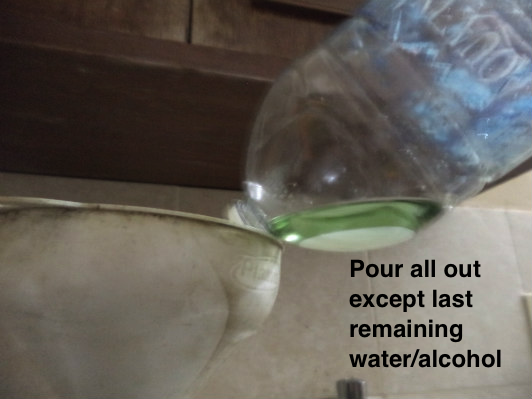 Ethanol has twice as high a temperature at which it evaporates than does gasoline. So it doesn't evaporate off the hot cylinder as easily as gasoline does and so some can stay there with the oil, diluting it. Let's analyze one possible example: An engine oil is mixed with pure gasoline at 32:1 with good reliability but then the owner bought different gas that had 10% ethanol in it. 32:1 fuel to oil is 3% oil. If half of the ethanol evaporated off the cylinder then that leaves 5% ethanol mixed with 3% oil which is the equivalent of mixing the fuel/oil at a ratio of 85 to 1. https://pubs.rsc.org/en/content/articlehtml/2017/ra/c7ra00357a?fbclid=IwAR0USTSdKUNim2NeOG_cg0Ii73f3XoEu0t58Z7cI3DC0h6qLJS9gKzC84Ag "ethanol is hard to vaporize due to its high heat of evaporation compared to gasoline." "Although bioethanol fuels have slight impact on the frictional characteristic of the oil, it has significant differences in the amount of wear [due to their not readily vaporizing on the cylinder wall and therefore diluting the oil]." "high acid in the oil [due to ethanol] causes high wear due to its corrosion on the surface" http://pubs.rsc.org/.../articlehtml/2017/ra/c7ra00357a Since the upper cylinder gets hotter than the lower cylinder then you'd expect excessive wear in the lower cylinder due to less evaporation of ethanol, closest to BDC and that is exactly what this study paper says - https://www.sciencedirect.com/science/article/abs/pii/S0043164818300450?fbclid=IwAR2b7THUhSFF7SrYk-I0v1KwIzxBHwcmpNtj_naXwYUuahr9bXzw-nk6_CI The higher the engine temp, the more the ethanol evaporates off the metal parts along with the gasoline. So high temps are had with high RPM, air cooling, hot weather, lean mixture (not recommended but seemingly very popular). Example Of Excess Wear In A Moderate Heat Engine: C.S. wrote in the Two Stroke R+D forum: "Anyone had any issues with modern fuel degrading lubrication of pre-mix 2T motor? Stripped a top end today, which has done less than 40 hours (trials, so not WOT running), and the rings are both badly worn. Its got a Wiseco piston, and no sign of any issues with air filtration." He went on to say that the jetting was too rich, so that wasn't the problem. The owner had used synthetic oil at 70:1 which normally is perfect for trials bikes when the fuel is w/o ethanol. In his country fuel with 10% ethanol is common. The cylinder liner was cast iron and the Wiseco rings were made for that. He hit the nail on the head when he wrote "Rapid engine wear is something that seems to have coincided with the shit fuels being introduced" (in reference to fuels with ethanol). "Piston rings are one of the flex-fuel engine parts that have been affected by the higher severity of the loading contact and by scuffing wear." "Recently, more severe wear problems caused by fuel dilution, due to bioethanol addition, in the lube oil in cold-starts have been reported [2]." "In engine oil lubricating sliding tests, friction and wear decreased [w/o ethanol], compared with the tests run in ethanol." https://www.sciencedirect.com/science/article/abs/pii/S0043164813001336 "The severity of the test was increased by lowering the operating temperatures. With the oil controlled at temperatures typical of short-trip driving combined with ambient temperatures below 25/sup 0/C, wear of many engine components increased substantially using ethanol as the fuel." https://www.osti.gov/etdeweb/biblio/8463551 "This testing indicates that at the low temperature conditions of the procedure, methanol reduces the buildup of engine deposits but greatly increases the engine wear rate." https://www.jstor.org/stable/44729875 |